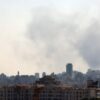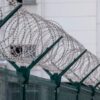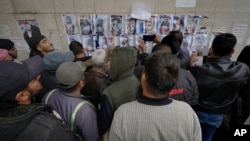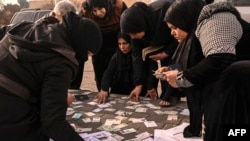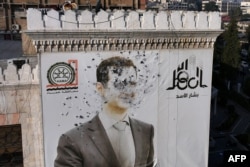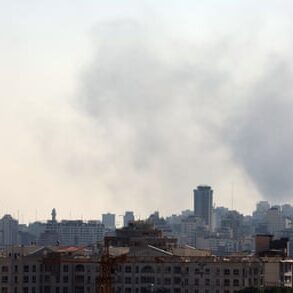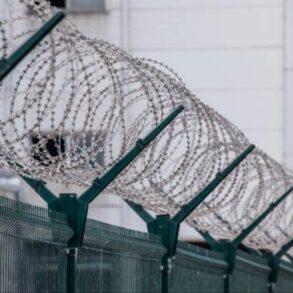united nations —
As Syrians celebrate the collapse of President Bashar al-Assad’s regime after more than 50 years of brutal father-son rule, the search continues for tens of thousands of Syrians who are still missing after having been arrested, detained or “disappeared.”
Human rights experts are urging the preservation of evidence of the torture and death of political prisoners as the doors of the country’s prisons are finally opened.
“We must prioritize accounting for the missing, ensuring that families receive the clarity and recognition they desperately need,” Geir Pedersen, U.N. special envoy for Syria, said in a statement Thursday.
“Evidence of atrocities must be preserved and thoroughly documented to ensure accountability under international humanitarian law. Justice for the victims and their families is not only a right, but also essential for healing and for preventing further violations.”
The Syrian Network for Human Rights (SNHR) has been documenting the thousands of arbitrarily detained, forcibly disappeared and persons tortured to death under Assad’s rule since 2011, when a regime crackdown on peaceful anti-government protests grew into a civil war.
According to SNHR’s figures, at least 231,000 civilians have been killed in the war, with 202,000 deaths attributed to the regime and the rest to various armed factions. SNHR says those killed by the regime include 23,000 children and 22,000 women as well as 15,000 who were tortured to death. The group has also documented more than 96,000 forcibly disappeared persons and about 40,000 detainees.
SNHR director Fadel Abdul Ghany told VOA that his group has been continuously monitoring who has been released from detention since the Assad regime collapsed Sunday.
“So, approximately 31,000 have been released from those arbitrary arrests or enforced disappearances,” he said, from a total of 136,000 persons. He said that leaves about 105,000 people who are unaccounted for.
Abdul Ghany said his organization’s research over the past 14 years, including the examination of thousands of death certificates, has “enabled us at the Syrian Network for Human Rights to announce that the vast majority of those, the remaining 105,000, have been killed.”
It is devastating news for families, many of whom have held out hope for more than a decade that they might see their missing loved ones again.
This week, many families descended upon the notorious military prison on the outskirts of the capital, Damascus, known as Sednaya. In 2017, Amnesty International described the prison as a “human slaughterhouse,” where authorities quietly and methodically killed thousands of people.
International news reports this week have shown men, many barefoot and some half naked, walking out of the prison, many emaciated, some unable to recall their own names.
Some prisoners had been in the facility since before the war, dating back decades to the rule of Assad’s father, Hafez al-Assad. Video from inside Sednaya shows torture chambers and cells, walls and floors caked in years of blood, mold, filth and thick cobwebs.
Brazilian political science professor Paulo Pinheiro has chaired the U.N.-mandated Independent International Commission of Inquiry on the Syrian Arab Republic since 2011. The Assad regime would not grant them access to Syria, but the commission carried out its work, methodically chronicling testimony from more than 11,000 survivors and witnesses of abuses and atrocities in the civil war.
Pinheiro said Sednaya had close links to the government.
“We know what units were responsible for the arbitrary detention, what personnel was involved in each center, the command of the center, the articulation with central organizations in the Syrian state,” he told VOA.
Also seen in video from Sednaya were people taking documents, perhaps in the hope of finding their loved ones’ names among the pages. Other papers appeared burned to ashes.
Pinheiro said evidence must be preserved for the new authorities.
“And we are intending to contact the new authorities precisely to affirm this need,” he said. “I think it is in the best interests of the new authorities that the evidence is being preserved.”
Those new authorities are members of the Islamist group Hayat Tahrir al-Sham, or HTS, which until 2016 was affiliated with al-Qaida. HTS is listed by the United Nations and the United States as a terrorist organization.
The group’s leader, Abu Mohammed al-Jolani, led the coalition of rebels whose offensive toppled the Assad regime in just over one week. Assad and his family fled to Russia as the rebels approached the capital.
On Tuesday, Jolani said he would name officials from the former regime who are wanted for torturing Syrian citizens.
In its latest report launched in August, the U.N. Syria Commission of Inquiry said it had “reasonable grounds to believe that the Government continued to commit acts of torture and ill-treatment against persons in State custody, including practices causing death in detention, as well as arbitrary imprisonment, rape or other forms of sexual violence of similar gravity, and enforced disappearances, again confirming continuing patterns of crimes against humanity and war crimes.”
Pinheiro said since the conflict began in 2011, the commission has compiled and updated a confidential list of alleged perpetrators. Their names are held in a safe in Geneva with the U.N. High Commissioner for Human Rights.
“When the government will be established, we will be very happy to contribute this list to the judicial system,” Pinheiro said.
SNHR issued an appeal this week to Russian President Vladimir Putin to extradite Assad to face trial in Syria for the crimes his regime committed, which include the use of chemical weapons and barrel bombs against the population in opposition areas.
Abdul Ghany told VOA that the new authorities should offer assurances that Assad or any security or military officers will not be subject to torture.
“This should be a rule that no one should be subjected to any type of torture,” he said. “The uprising’s aim is to move our state from brutal dictatorship, family rule, toward democracy and toward rule [that] respects the human rights.”
Both Abdul Ghany and Pinheiro say accountability must not be limited to only the Assad regime. Rights violations were committed by other armed groups in Syria’s civil war, including HTS, although to a much lesser extent than the regime.
The Commission of Inquiry’s August report cited HTS for some executions, as well as detentions including a 7-year-old child, beatings, coerced confessions and reports of torture in their prisons.
Since HTS launched its lightning offensive across several cities and towns on November 27, SNHR says the group has been responsible for the deaths of fewer than 10 civilians.
“I think it is a good indication,” Abdul Ghany said. He said his group has recorded minor violations by HTS and will continue to monitor them as the transition plays out.
“Until now, they are doing good,” he said.
This post was originally published on this site be sure to check out more of their content.

